
How to Use SN74LS00N: Examples, Pinouts, and Specs
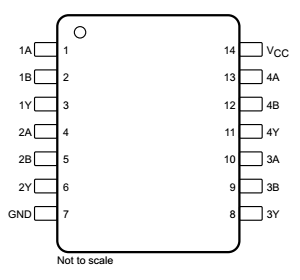
 Design with SN74LS00N in Cirkit Designer
Design with SN74LS00N in Cirkit DesignerIntroduction
The SN74LS00N is a quad 2-input NAND gate integrated circuit (IC) manufactured by Texas Instruments. This IC contains four independent NAND gates, each with two inputs, housed in a single 14-pin package. It operates within a supply voltage range of 4.75V to 5.25V, making it suitable for a variety of digital logic applications. The SN74LS00N is commonly used in digital logic circuits to perform logical NAND operations, which are fundamental in building more complex logic functions.
Explore Projects Built with SN74LS00N
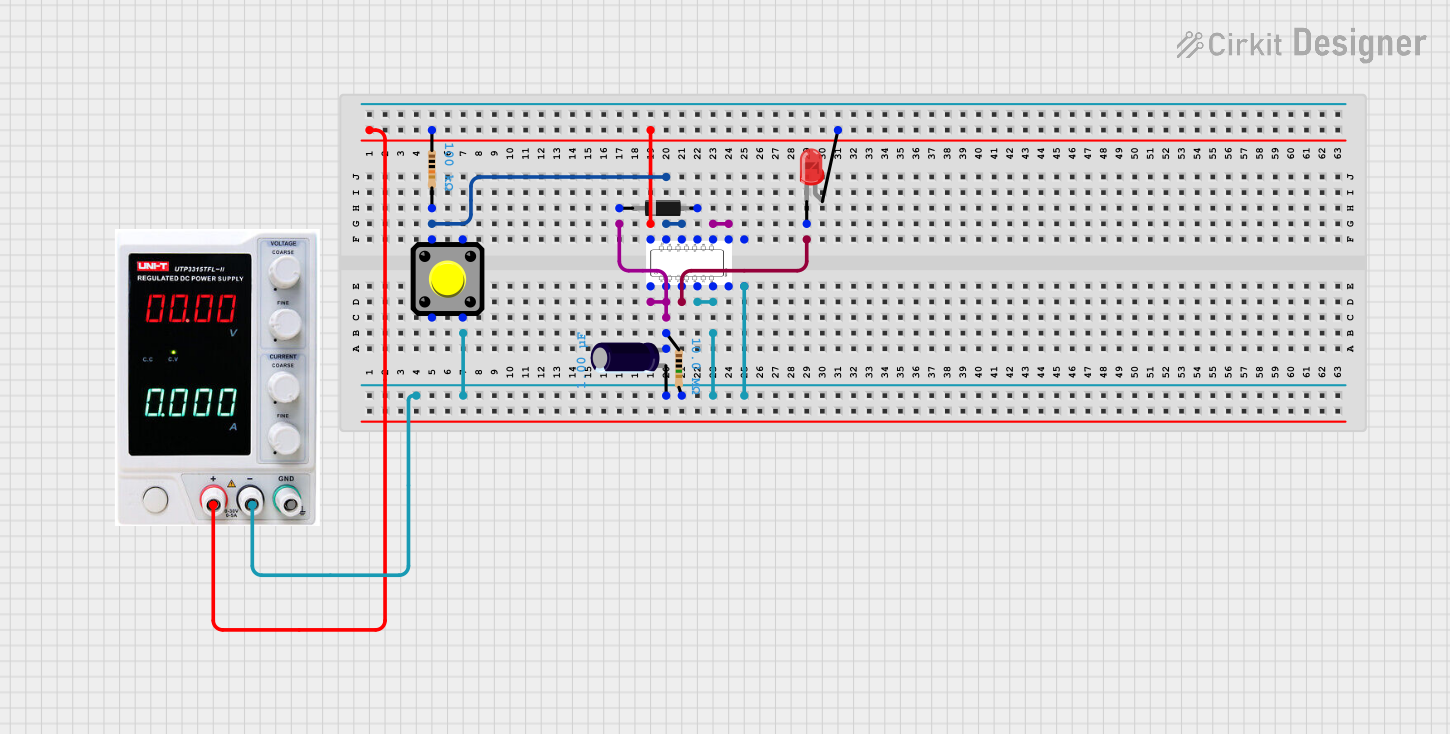
 Open Project in Cirkit Designer
Open Project in Cirkit Designer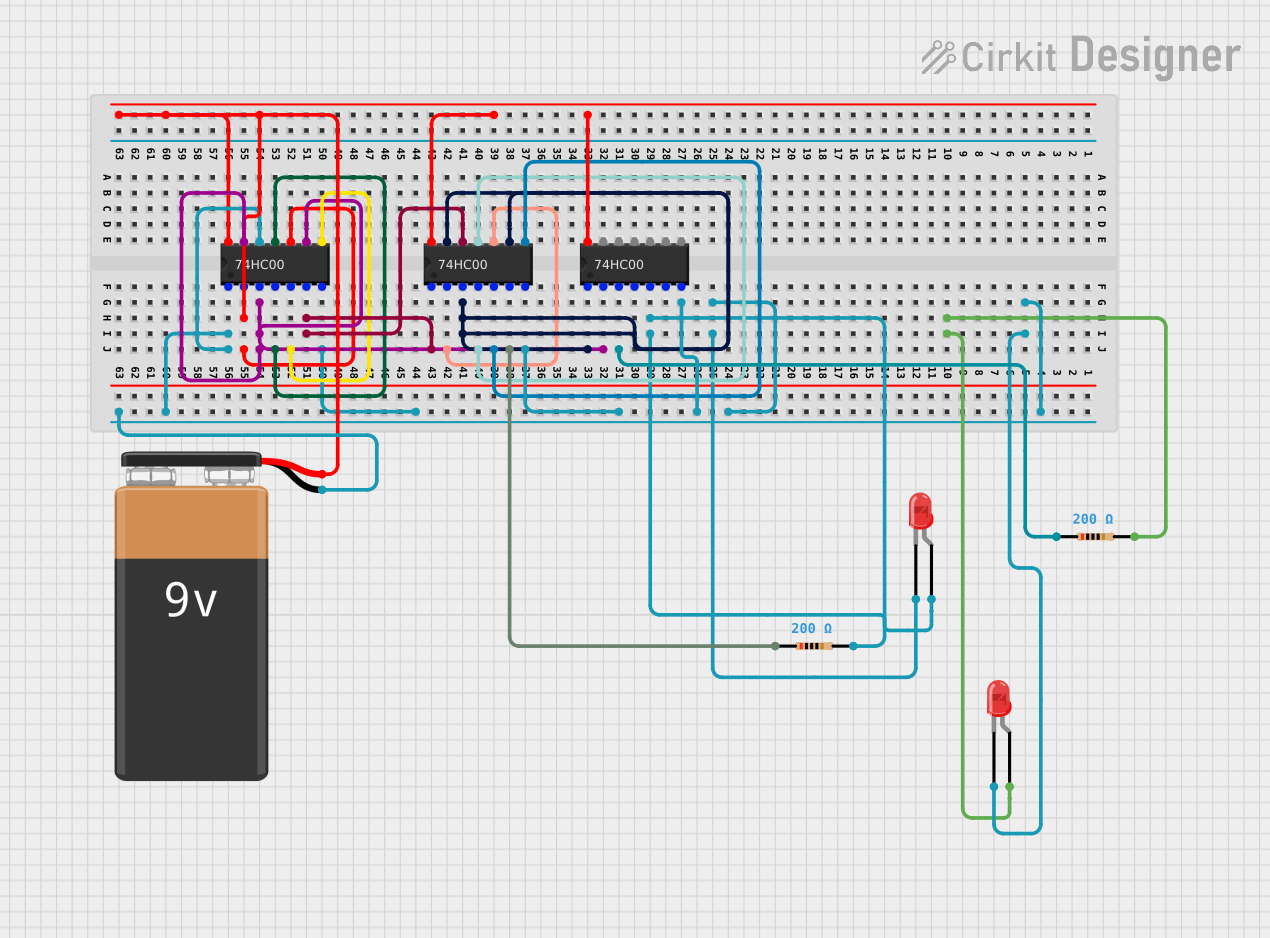
 Open Project in Cirkit Designer
Open Project in Cirkit Designer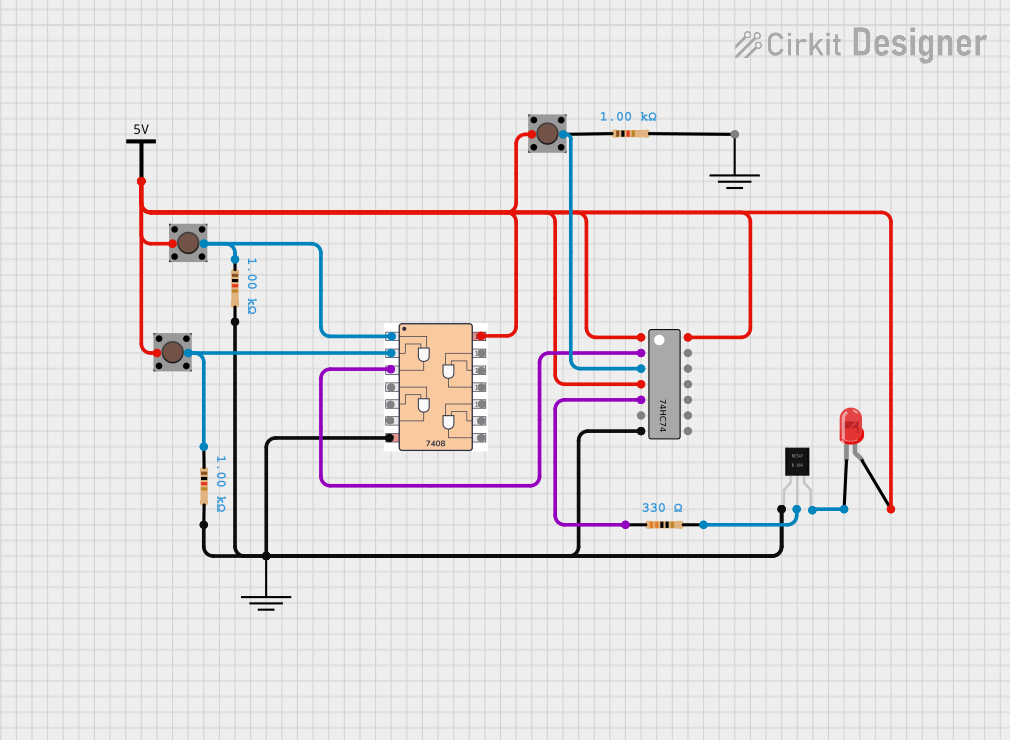
 Open Project in Cirkit Designer
Open Project in Cirkit Designer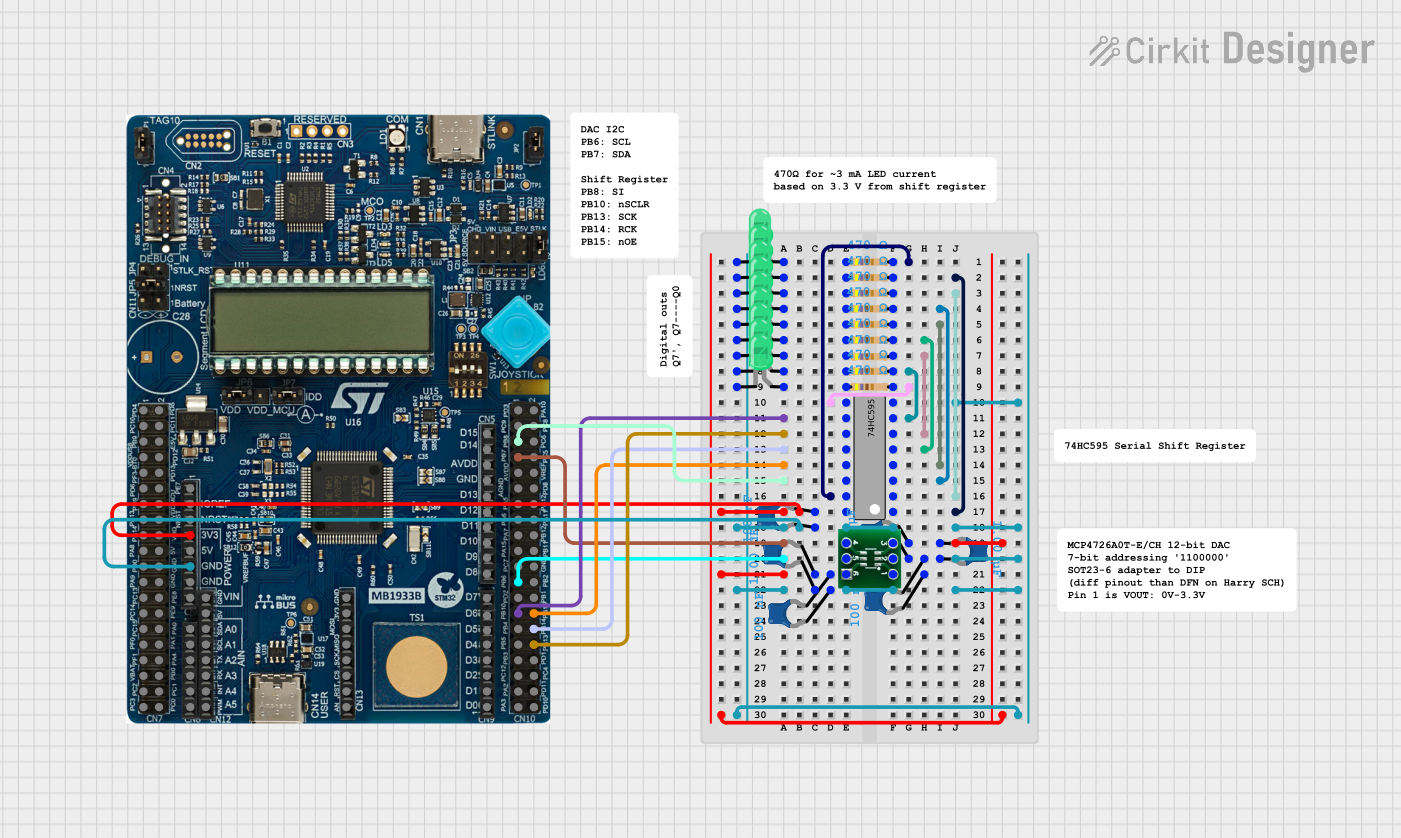
 Open Project in Cirkit Designer
Open Project in Cirkit DesignerExplore Projects Built with SN74LS00N

 Open Project in Cirkit Designer
Open Project in Cirkit Designer
 Open Project in Cirkit Designer
Open Project in Cirkit Designer
 Open Project in Cirkit Designer
Open Project in Cirkit Designer
 Open Project in Cirkit Designer
Open Project in Cirkit DesignerTechnical Specifications
Key Technical Details
| Parameter | Value |
|---|---|
| Supply Voltage (Vcc) | 4.75V to 5.25V |
| Input Voltage | 0V to Vcc |
| Output Voltage | 0V to Vcc |
| High-Level Input | 2V (minimum) |
| Low-Level Input | 0.8V (maximum) |
| High-Level Output | 2.7V (minimum) |
| Low-Level Output | 0.5V (maximum) |
| Operating Temperature | 0°C to 70°C |
| Propagation Delay | 15ns (typical) |
| Power Dissipation | 20mW (typical) |
Pin Configuration and Descriptions
| Pin No. | Pin Name | Description |
|---|---|---|
| 1 | 1A | Input A of NAND Gate 1 |
| 2 | 1B | Input B of NAND Gate 1 |
| 3 | 1Y | Output of NAND Gate 1 |
| 4 | 2A | Input A of NAND Gate 2 |
| 5 | 2B | Input B of NAND Gate 2 |
| 6 | 2Y | Output of NAND Gate 2 |
| 7 | GND | Ground |
| 8 | 3Y | Output of NAND Gate 3 |
| 9 | 3A | Input A of NAND Gate 3 |
| 10 | 3B | Input B of NAND Gate 3 |
| 11 | 4Y | Output of NAND Gate 4 |
| 12 | 4A | Input A of NAND Gate 4 |
| 13 | 4B | Input B of NAND Gate 4 |
| 14 | Vcc | Supply Voltage |
Usage Instructions
How to Use the Component in a Circuit
- Power Supply: Connect pin 14 (Vcc) to a 5V power supply and pin 7 (GND) to ground.
- Inputs: Connect the inputs (A and B) of the NAND gates to your desired logic signals.
- Outputs: The output (Y) of each NAND gate will provide the NAND operation result of the corresponding inputs.
Example Circuit
Below is an example of how to connect one of the NAND gates in the SN74LS00N to an Arduino UNO:
// Arduino UNO connections to SN74LS00N
// Pin 2 (1B) -> Digital Pin 2
// Pin 1 (1A) -> Digital Pin 3
// Pin 3 (1Y) -> Digital Pin 4
void setup() {
pinMode(2, OUTPUT); // Set pin 2 as output
pinMode(3, OUTPUT); // Set pin 3 as output
pinMode(4, INPUT); // Set pin 4 as input
}
void loop() {
digitalWrite(2, HIGH); // Set input B to HIGH
digitalWrite(3, LOW); // Set input A to LOW
int output = digitalRead(4); // Read the output of the NAND gate
// Output will be HIGH because NAND(LOW, HIGH) = HIGH
}
Important Considerations and Best Practices
- Ensure the supply voltage (Vcc) is within the specified range (4.75V to 5.25V).
- Avoid floating inputs by connecting unused inputs to either Vcc or GND.
- Use decoupling capacitors (e.g., 0.1µF) near the Vcc pin to filter out noise.
Troubleshooting and FAQs
Common Issues and Solutions
No Output Signal:
- Check Power Supply: Ensure Vcc and GND are properly connected.
- Verify Input Signals: Ensure the input signals are within the specified voltage range.
Incorrect Output:
- Check Input Connections: Verify that the inputs are connected to the correct pins.
- Inspect for Short Circuits: Ensure there are no short circuits between adjacent pins.
FAQs
Q1: Can I use the SN74LS00N with a 3.3V power supply?
- A1: No, the SN74LS00N is designed to operate with a supply voltage range of 4.75V to 5.25V. Using a 3.3V supply may result in unreliable operation.
Q2: What happens if I leave an input pin floating?
- A2: Floating input pins can lead to unpredictable behavior. Always connect unused inputs to either Vcc or GND.
Q3: How can I reduce noise in my circuit?
- A3: Use decoupling capacitors (e.g., 0.1µF) near the Vcc pin to filter out noise and stabilize the power supply.
By following this documentation, users can effectively integrate the SN74LS00N into their digital logic circuits, ensuring reliable and efficient operation.